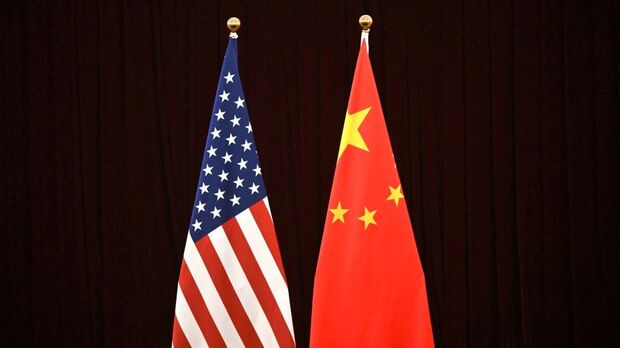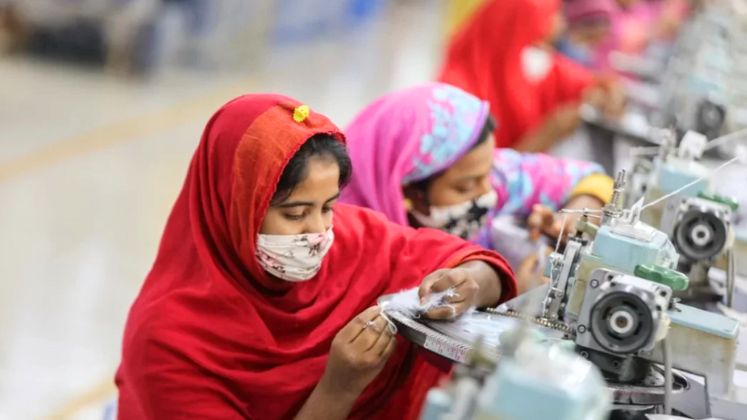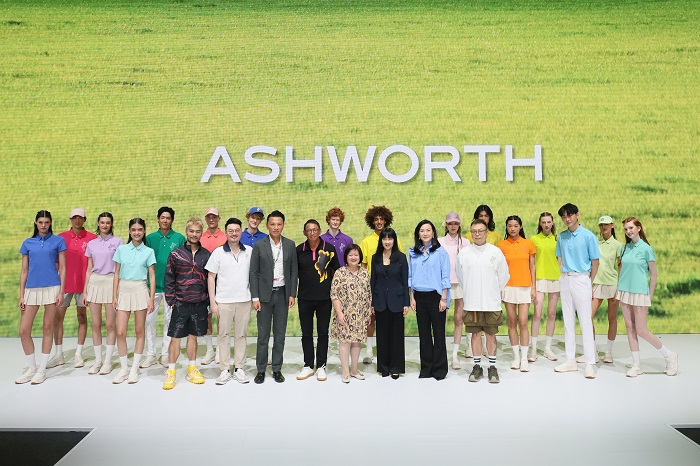FW
The EU is now the world's largest garment importer, with shipments increasing at a rapid pace. In contrast, the US is showing marginal gains. US footwear companies are sourcing more from inner China and non-traditional production countries in a bid to offset tariffs and rising costs. While China’s share of the US market has fallen 3 per cent over the past year, Vietnam is gaining the most from this drop.
Colombia's textiles and apparel industry is set to grow 7 per cent in 2014, buoyed by strong domestic sales. But exports, a key pillar of industry growth, look disappointing. East African countries continue to induce foreign investors to revive their textile and apparel industries.
India has overtaken Germany and Italy to emerge as the world's second largest textile exporter. But it lags behind China, whose exports are nearly seven times higher. With a 4.5 per cent share in world garment exports, Bangladesh has overtaken India, which has a 3.5 per cent share. Garment sales comprise 80 per cent of Bangladesh’s exports, catalysed by export-processing zones that enjoy subsidized power.
In addition to lower labor costs, Bangladesh’s clothing exports don’t face taxes in at least 37 countries, including EU nations, Canada and Australia.
Japan is the third largest garment importer in the world after the US and Germany. But imports from China are gradually declining. Chinese garments which constituted 84 per cent of Japan’s imports at one time reduced to 75.6 per cent in 2013, while the share from ASEAN countries surged by 8.4 per cent. Japanese garment buyers have invited Pakistani producers to tap their market as they intend reducing garment imports from China.
Japan is an industrialized country deficient in natural resources and raw materials hence it relies heavily on value added exports to pay for these imports. On the other hand, Pakistan stands in the category of developing countries deficient in technology and endowed with natural resources of fertile agricultural land and raw materials. The natural resource endowments and economic backgrounds of these countries make a strong match for engaging in trade and investment.
During the early days of Japan-Pakistan foreign trade relations, Pakistan exported raw cotton to Japan and Japan processed the cotton into yarn and cloth and then exported them back to Pakistan. This pattern shifted later on as Japan began to export spinning machinery to Pakistan, and currently textile yarn and fabric is the largest component of Pakistani exports to Japan.
Texas Tech University researchers have recently discovered low-grade cotton made into an absorbent non-woven mat can collect up to 50 times its own weight in oil. The results strengthen the use of cotton as a natural absorbent for oil. Fibertect is a non-woven decontamination wipe developed by researchers at Texas Tech capable of cleaning chemical and biological agents.
In the four year project, scientists tried to create a fundamental understanding of the effect of fiber structure and basic characteristics of cotton on oil sorption capacity of unprocessed raw cotton. The work also examined the basic mechanisms behind oil absorption by non-woven cotton webs.
The conclusion is that non-woven cotton webs as oil absorbent have tremendous potential for application in real-time oil spill scenarios along with environmental sustainability and commercial acceptability. Fibertect is a nonwoven decontamination wipe. It is two non-woven cotton layers with the carbon in between. It is a three layer, inert, flexible, drapable, nonwoven composite substrate for absorbing and adsorbing chemical warfare agents, toxic industrial chemicals and pesticides.
Fibertect is self-contained and packaged for easy use, storage, and transport. Materials used in the outside layers may vary to provide both absorption and adsorption properties and multiple functional uses.
Asia, the world’s textile and clothing workshop is at the heart of many sustainability initiatives. The reason is that brands simply cannot afford not to care: their reputation can be seriously damaged if a supplier is responsible for a pollution spill or an industrial accident.
Multiple initiatives are underway in Bangladesh’s garment and textile sector, which has long had a poor environment reputation. One is a German development program, GIZ-PSES. It’s preparing an agreement with a global manufacturer of industrial chemicals and dyes to improve chemical management in 10 Bangladesh textile mills. Bangladesh will benefit from GIZ’s chemical management tools, which includes practical measures for proper handling and storage of chemicals, improving workplace safety, saving water, energy and dyes and complying with environmental laws.
In India, increased global demand for eco-friendly and ethical textiles is encouraging Indian manufacturers to seek global certifications. Alok Industries, India's largest fully integrated textile company for cotton and polyester, has partnered with Zameen Organic to form a farmer-centered fair trade business. This initiative supports the conversion of farmers to organic farming and helps them establish independent co-operatives, as well as arranging organic and fair trade certification for growers.
Home-grown green production initiatives are also emerging in China. Huafang Textile, one of China’s leading printing and dyeing companies, is using bio-enzyme-based products. This helps the company to efficiently reduce chemical oxygen demand while reducing water and energy use.
Foreign direct invested (FDI) firms account for 60 per cent of Vietnam’s total garment and textile export revenue. There are 3,000 garment and textile firms in Vietnam, 25 per cent of which are FDI firms. Foreign firms are expected to continue ramping up their investments throughout the year in anticipation of forthcoming free trade agreements. Vietnam is currently negotiating entry in the Trans-Pacific Partnership agreement. If the trade negotiations are successful, Vietnam would be able to either halve or nullify the 17 per cent duty the US levies on Vietnam’s garment exports. In expectation of this, foreign firms are implementing major investment projects in the textile and garment sector throughout the country.
To secure duty-free status, Vietnam must agree that all manufacturing processes, including yarn spinning, knitting and dyeing, will be carried out in TPP member countries. If Vietnam obtains duty-free status, that would help fuel further inflows of FDI into Vietnam. Currently, the major players in the Vietnamese garment and textile industry are China, Hong Kong, and Taiwan. However, South Korea, Japan, Australia, and the US are also looking for larger investment opportunities due to investors’ anticipation of Vietnam fully opening its market in line with World Trade Organization commitments and the signing of the TTP agreement.
Italy's exports of textile machinery increased 9 per cent for the first quarter of this year compared to 2013. Sale of Italian machinery is still declining in China and India but growth has been recorded in other primary export markets like Turkey, United States and Bangladesh.
According to ACIMIT, the Association of Italian Textile Machinery Manufacturers, textile machinery orders index for the second quarter of 2014 has recorded a 6 per cent increase compared to the previous quarter. ACIMIT is a private non-profit body and its main purpose is to promote the Italian textile machinery sector and in supporting its activity, mainly abroad. In order to do that, ACIMIT provides information on the activity of the producers and organises a wide range of promotional activities, often in collaboration with the Italian Trade Commission.
Another major aim of the association is to inform its member companies about commercial, financial and technical problems in different markets to facilitate market entry. The group is confident that ITMA, the industry’s premier trade event, to be held in Milan from November 12 to 19, 2015, will kick-start growth for the entire sector. A total of 336 Italian machinery manufacturers have already confirmed their participation for ITMA 2015.
www.acimit.it/
Johnson NG, Sr Manager, Publications & E-commerce at Hong Kong Exhibition and Convention Centre (HKTDC) was in India recently to promote the fairs organized by the company as well as their online trade promotion platform. “I think India fits the bill, versus China, because it’s more for small orders, variety and exclusivity. If this is put across loud and clear, we will have more and more participation from India,” he says. India according to him stands for variety and not mass production or big orders.
HKTDC is strongly promoting small order initiatives in the country and these were discussed with the export promotion councils, during his visit. “Many of their members are capable of entertaining small orders. The small order volume in terms of $2,500 (over Rs 15,000) would be the optimum size of a small order trade for members,” he said, adding, “If Indian companies are interested in this, I would encourage them to use our online platform to do that. That is an alternative, Indian companies could explore in addition to our trade fairs.”
He feels that in terms of size and price range, Indian export is quite competitive. “They are quite unique, where other products of the western world don’t match. I hope Indian companies make use of our platforms, be it the trade fair or our online sourcing platform, to capture more business. We can help promote Indian export through our platform,” Johnson informed.
At the same time, HKTDC also wants to promote Hong Kong-based textile and garment products and brands in India. However, he thinks that a lot of effort needs to go into igniting Indian interest in Hong Kong and to increase the participation of Indian companies in Hong Kong fashion weeks together with its online promotional platform.
Yarn exports from India decreased around 20 per cent year-on-year in the first quarter ended June, on the back of falling demand from China. However, spinners believe that it's a temporary issue and the shipment will improve September onwards. Lifting of stock-piling policy by the Chinese government coupled with high production and labour costs are becoming a burden for the industry. The country has also reduced their fabric production due to which yarn imports have gone down too. Yarn shipment from the country slipped to about 100 million kg in April and, according to industry estimate, further to 90 million kg each in May and June, after clocking average monthly exports of about 120 million kg in 2013-14, which was 33 percent more than the previous year.
Indian yarn exporters are facing problems in Europe, too, with Pakistan diverting its exports to EU, taking advantage of the 9.65 per cent additional benefit under generalised system of preferences (GSP) Plus agreement. But with industry hopeful of getting orders from China as well as domestic industry keeping the festive season ahead in mind, players are looking for better days ahead.
On the other hand, China has introduced a new cotton policy from April 1, under which, the government reset cotton auction bids at 17,250 yuan (over Rs 1,70,000) per ton, down 4.2 per cent from its floor price of 18,000 Yuan (over Rs 1,77,000) per ton. Indian spinners are finding it difficult to export yarn at a lower price-level offered by China. For mills in Tamil Nadu, which produce 50 per cent of the country's total yarn, the landed cost of good quality cotton ranges between Rs 45,000 to Rs 46,000 per candy of 355 kg.
Rising operating and labour costs in China are forcing many Western apparel brands and retailers to explore new sourcing destinations while cutting back on sourcing in China. The new report by Textiles Intelligence titled ‘World textile and apparel trade and production trends: South-East Asia, June 2014’, points out that in looking for alternative production locations, western buyers have found that their options are limited as no other single country can provide the capacity, quality, skills, variety, and complete supply chain which the Chinese textile and clothing industry possesses.
Concerns over factory safety, and adverse publicity associated with these concerns, are known to have deterred buyers from sourcing in Bangladesh and many buyers are also wary about sourcing from Cambodia, a potential low cost alternative to Bangladesh and China, because of recent labour unrest and reliability issues. Among all these destinations, Vietnam is emerging as a better prospect for western buyers, as it has a well-developed textile supply chain and has not faced criticism that’s plaguing the industries in Bangladesh and Cambodia.
In fact, Vietnam is expected to be one of the fastest growing suppliers of textiles and clothing to Western markets over the next few years. In 2013 US textile and clothing imports from Vietnam grew in value by 14.6 per cent, which represented the fastest growth rate among imports from the USA’s 10 largest suppliers. And imports continued to grow strongly in the first four months of 2014, having increased by 15.5 per cent compared with the corresponding period of the previous year.
Vietnamese exporters also stand to gain from a successful conclusion to negotiations aimed at establishing a Trans-Pacific Partnership (TPP) free trade agreement. This would provide imports of Vietnamese products into the US market with significant tariff benefits and flexible rules of origin.
www.textileintelligence .com
A new industrial estate for garments is going to come up in Boyolali, Indonesia. The garment park is being planned over 500 hectares area. Construction is expected to begin in 2016 and it would take about two years for completion. More than 85 companies, including many Korean companies, have already expressed their interest in setting up garment factories in the proposed industrial estate.
Owing to ample availability of human resources, Boyolali is considered to be a good location for garment production, especially for exports. Indonesia’s export of non-knitted apparel and clothing accessories increased marginally by 1.78 per cent in the first four months of the current year compared to the corresponding period of last year. Non-knitted garments and apparel accessories exports accounted for a 2.82 per cent share in Indonesia’s non-oil and gas exports during January to April 2014.
The textile and garment sector offers both challenges and opportunities as Indonesia looks to the sector to be a major engine of growth to 2030. One of the sector’s key strengths is the rare presence of both an upstream and a downstream industry. Some 60 per cent of manufactured garments are exported to international markets as various leading international apparel brands use Indonesia as a manufacturing base for their global exports.












